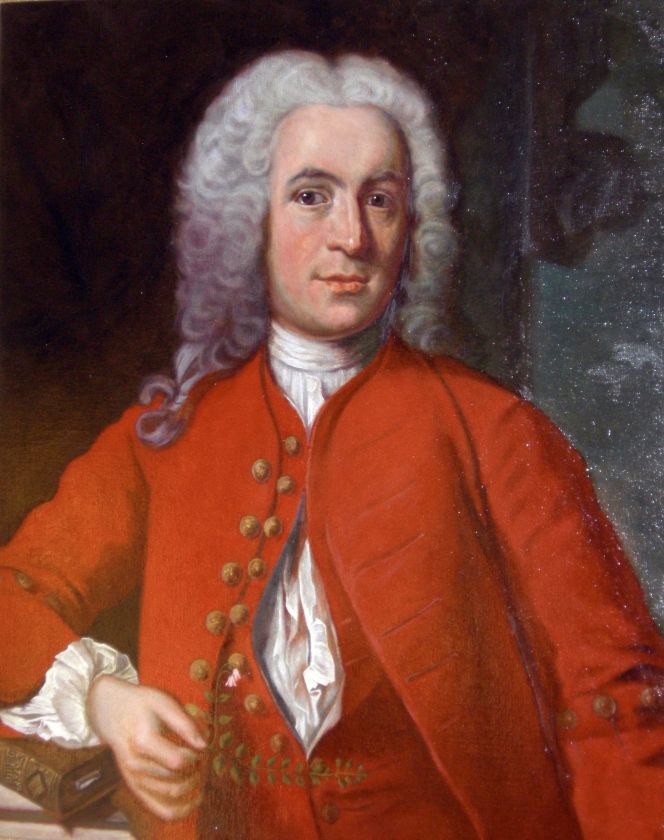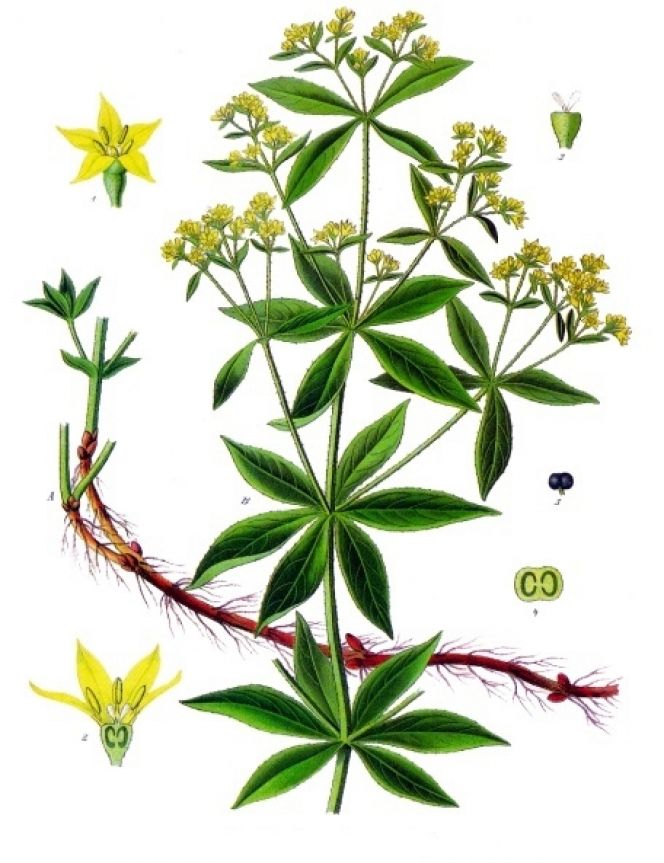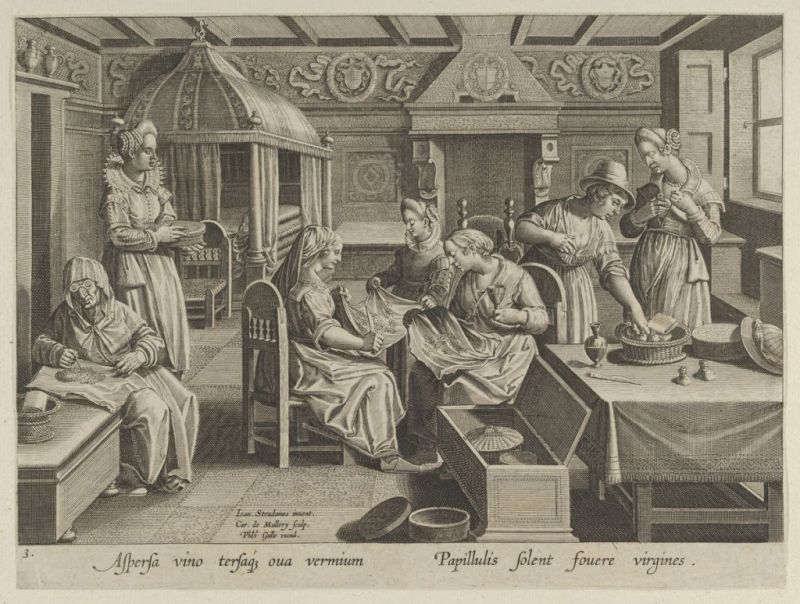ikfoundation.org
The IK Foundation
Promoting Natural & Cultural History
Since 1988


 Crowdfunding Campaign
Crowdfunding Campaignkeep knowledge open, connected, and growing on this textile history resource...
CARL LINNAEUS’ TEXTILE OBSERVATIONS
– in Malmö 1749
The tour of Skåne (Skånska resan), lasting April to August in 1749, was to be the final provincial tour of the Swedish naturalist Carl Linnaeus. He continued to pay attention to dye plants and even speculated on new species that had been tested less but may be useful for durable colours on yarn and cloth. Just as on his tour of Västergötland three years earlier, Linnaeus encountered even here an important wool establishment; the clothing manufacturers Josias and Johan Hegardt’s in Malmö. Other textile-connected observations during his one-week stay in the area included eiderdown for bolsters and clothing, the alum trade, spinning of yarn, and future possibilities for sericulture.
 Carl Linnaeus on his wedding portrait in 1739, commissioned ten years before his journey to Skåne and Malmö. Oil on canvas by Johan Henric Scheffel (Wikimedia Commons).
Carl Linnaeus on his wedding portrait in 1739, commissioned ten years before his journey to Skåne and Malmö. Oil on canvas by Johan Henric Scheffel (Wikimedia Commons).Carl Linnaeus (1707-1778) is mostly known for his botanical work and founding of the modern binomial nomenclature, but among the detailed accounts from his provincial Swedish journeys, numerous observations of textile matters were also included. The tour to Skåne in 1749 – as well as his two previous journeys – were financed by the parliament as they were considered politically significant for ascertaining the best development potential for the country’s mercantile economy, to help the start-up of more manufacturing, for instance, which could result in improved conditions for the country as well as for its inhabitants.
Linnaeus showed great interest in the largest broadcloth manufacturing of the city when he visited Malmö on 18 June, where mainly ‘fine broadcloth, swanboy [thick, soft], rask [thin and smooth], camlet, plush [often with flower designs], felt, flannel, shag or nap, Freisian or fearnought, so-called molton [tightly woven, soft and thick]’ were woven. In other words woollen fabric of varying quality and thickness. He described the activity as follows: ‘…established by Mr Mayor [Josias] Hegardt, consisted of 5 coarse looms and 2 finer ones, besides the ones belonging to the son, Johan Hegardt, who had 3 coarse looms, 2 cloth looms and 2 stocking looms. Here, I saw more wool than ever I had seen in any one place. Many a man goes dressed in fine broadcloth, who would never dream of the number of processes the wool goes through before it can become a garment’. Furthermore, it was noted that the production required thirty-seven different stages, from the shearing of the sheep to the making up of the garments. At the time of his visit, the manufacturing was at its peak with 113 employees, most of whom were ‘scrubbers, carders and spinners’ who numbered 74. Other occupational categories consisted of ‘4 masters, 5 journeymen, 9 apprentices, 2 sorters and washers of wool, 1 feller with 2 help-mates, 1 cutter with a journeyman, 1 help-mate, 2 burlers and 2 dyers’.
![During his tour of Skåne, Linnaeus drew special attention to the alum works at Andrarum, which was in the midst of an expansive phase in the years 1720-1760 with countess Christina Piper at the helm. A great deal of the alum produced was used domestically, but the export was not inconsiderable. Malmö, situated on the west coast was one of the ports for exporting alum and the transports went mainly to Copenhagen and Lübeck, 1729 being a record year with 1,005 barrels. Alum was the most common mordant for textile dyeing, among several other areas of use. Map of Skåne ca 1750 by “Kongl. Lantmäteri Contoret” [the Royal Land Surveying Office] (Private ownership).](https://www.ikfoundation.org/uploads/image/2-skacc8ane-664x580.jpg) During his tour of Skåne, Linnaeus drew special attention to the alum works at Andrarum, which was in the midst of an expansive phase in the years 1720-1760 with countess Christina Piper at the helm. A great deal of the alum produced was used domestically, but the export was not inconsiderable. Malmö, situated on the west coast was one of the ports for exporting alum and the transports went mainly to Copenhagen and Lübeck, 1729 being a record year with 1,005 barrels. Alum was the most common mordant for textile dyeing, among several other areas of use. Map of Skåne ca 1750 by “Kongl. Lantmäteri Contoret” [the Royal Land Surveying Office] (Private ownership).
During his tour of Skåne, Linnaeus drew special attention to the alum works at Andrarum, which was in the midst of an expansive phase in the years 1720-1760 with countess Christina Piper at the helm. A great deal of the alum produced was used domestically, but the export was not inconsiderable. Malmö, situated on the west coast was one of the ports for exporting alum and the transports went mainly to Copenhagen and Lübeck, 1729 being a record year with 1,005 barrels. Alum was the most common mordant for textile dyeing, among several other areas of use. Map of Skåne ca 1750 by “Kongl. Lantmäteri Contoret” [the Royal Land Surveying Office] (Private ownership).Dye plants for textile goods were something that Linnaeus noted on several occasions in the city. On 13 June, he observed that common madder was grown at Malmö and ‘…grew abundantly at the master gardener Christian Müller’s without being covered in winter…I could not but see that it here grew and flourished as prolifically as ever I had seen it in France or Flanders, for here was surely the opportunity to establish madder plantations in Skåne, as so much of the root is annually ordered from abroad and consumed by dyers’. He had great hopes for increased domestic growth of this valuable dye plant for strong and sustainable reds, which at the time were mainly imported. On the same day, he also described that the city had ‘6 dyer-men’, and Johan Mumber was one of them. Two of these dyers were engaged in the previously mentioned clothing manufacturing, owned by Josias and Johan Hegardt.
 This plate of common madder, clearly demonstrates the fleshy root which contains the desirable red dye. From: Köhler's Medizinal-Pflanzen, no 123 Rubia tinctorum, late 19th century (Wikimedia Commons).
This plate of common madder, clearly demonstrates the fleshy root which contains the desirable red dye. From: Köhler's Medizinal-Pflanzen, no 123 Rubia tinctorum, late 19th century (Wikimedia Commons).Saw-wort (Serratula tinctoria), on the other hand, was a plant growing abundantly in Skåne and, moreover, a significant trading commodity; according to Linnaeus, the plant provided the women with a small income in the summertime, as it was transported raw by the cartload and sold at Malmö. What he nevertheless bemoaned on 4 July – on his way north in the county – was that the plant which was sold did not remain with the dyers of Malmö but was ‘shipped out to Denmark and other foreign parts before other domestic dyers had got enough…’ That was contrary to common practice; that a dye plant was exported instead of being imported.
Being self-sufficient in linen and wool products was perfectly possible in the Swedish climate. In contrast, it was considerably more challenging to produce silk, but the dream of sericulture on a large scale still persisted for several decades. Climatically, the greatest potential for the production to succeed was in the southernmost provinces, but Linnaeus’ visit to Malmö on 13 June showed it to be problematic even there: ‘The mulberry trees of the black variety were to be found here in several gardens, but they had died off in the severe winters more than the walnut trees. White mulberry trees, growing among the black mulberry trees in Mr Mayor Hegardt’s garden in 1740, did not die from cold, as all the black mulberry trees were destroyed above ground, which is clear proof that the white mulberry trees, which are best for silkworms, tolerate the winters better than the black ones.’
 This detailed engraving – being 150 years old already at the time of Linnaeus’ visit in Malmö – clearly demonstrates the increased difficulty with sericulture in another unsuitably cold climate. The women worked with the incubation of the silkworms, and tried to keep them as warm as possible by wrapping them in cloths or tie-on pockets and putting the delicate parcels in protective baskets. From: The Incubation of the Silkworm Eggs, Plate 3 “The Introduction of the Silkworm” by Karel van Mallery, Antwerp in ca 1595. (Courtesy of: The Metropolitan Museum of Art, Online Collection, No: 49.95.869.2).
This detailed engraving – being 150 years old already at the time of Linnaeus’ visit in Malmö – clearly demonstrates the increased difficulty with sericulture in another unsuitably cold climate. The women worked with the incubation of the silkworms, and tried to keep them as warm as possible by wrapping them in cloths or tie-on pockets and putting the delicate parcels in protective baskets. From: The Incubation of the Silkworm Eggs, Plate 3 “The Introduction of the Silkworm” by Karel van Mallery, Antwerp in ca 1595. (Courtesy of: The Metropolitan Museum of Art, Online Collection, No: 49.95.869.2).Linnaeus often showed an interest in filling materials for pads, cushions, bolsters, etc.; he noted, for example, from this journey, that the goose feather was a substantial trading item in Skåne, used mainly as stuffing material for pads and bolsters. There were also other bird species than the goose, which yielded suitable feathers and down, which was mentioned during the visit to Malmö on 13 June 1749. ‘Swansdown is very beautiful, soft and does not get so easily matted, yet it does not match up to eiderdown. It is used for bedding and also padding in clothes.’ However, the spinning of yarn – from flax or wool – was only mentioned in passing by Linnaeus on 12 June at the children’s home in Malmö, which ‘held 126 children’, learning how to ‘sew, spin and make bobbin lace’.
Notice: Quotes are translated from Swedish to English.
Sources:
- Hansen, Viveka, ‘Fyra sekel Malmö textil – 1650 till 2000’, Elbogen pp. 23-91, 1999 (35-38).
- Hansen, Viveka, Textilia Linnaeana – Global 18th Century Textile Traditions & Trade, London 2017 (pp. 302-312, 351, 363-364 & 376).
- Köhler, Franz Eugen, Köhler's Medizinal-Pflanzen, 1887-98.
- Linnaeus, Carl, Skånska resa, på höga öfwerhetens befallning förrättad år 1749…, Stockholm 1751.
More in Books & Art:
Essays
The iTEXTILIS is a division of The IK Workshop Society – a global and unique forum for all those interested in Natural & Cultural History.
Open Access Essays by Textile Historian Viveka Hansen
Textile historian Viveka Hansen offers a collection of open-access essays, published under Creative Commons licenses and freely available to all. These essays weave together her latest research, previously published monographs, and earlier projects dating back to the late 1980s. Some essays include rare archival material — originally published in other languages — now translated into English for the first time. These texts reveal little-known aspects of textile history, previously accessible mainly to audiences in Northern Europe. Hansen’s work spans a rich range of topics: the global textile trade, material culture, cloth manufacturing, fashion history, natural dyeing techniques, and the fascinating world of early travelling naturalists — notably the “Linnaean network” — all examined through a global historical lens.
Help secure the future of open access at iTEXTILIS essays! Your donation will keep knowledge open, connected, and growing on this textile history resource.
been copied to your clipboard




– a truly European organisation since 1988
Legal issues | Forget me | and much more...
You are welcome to use the information and knowledge from
The IK Workshop Society, as long as you follow a few simple rules.
LEARN MORE & I AGREE







